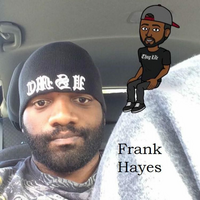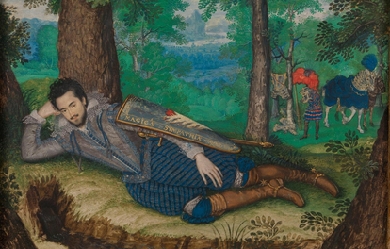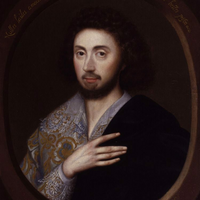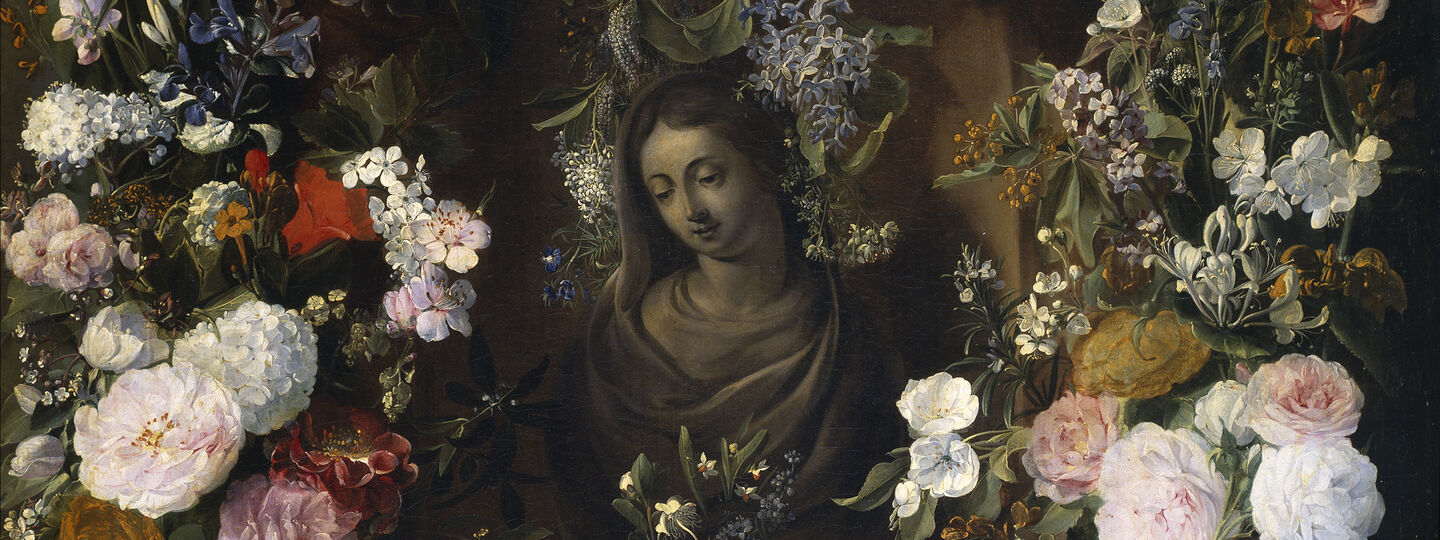
Info
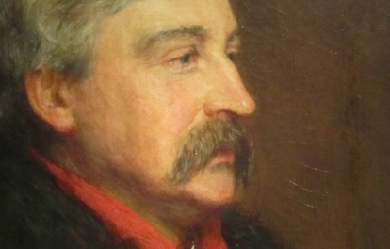
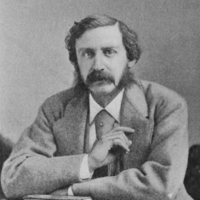
Francis Brett Hart, known as Bret Harte (August 25, 1836 – May 5, 1902), was an American short story writer and poet, best remembered for his short fiction featuring miners, gamblers, and other romantic figures of the California Gold Rush. In a career spanning more than four decades, he wrote poetry, plays, lectures, book reviews, editorials, and magazine sketches in addition to fiction. As he moved from California to the eastern U.S. to Europe, he incorporated new subjects and characters into his stories, but his Gold Rush tales have been most often reprinted, adapted, and admired. Biography Early life Harte was born in the capital city of Albany, New York. He was named Francis Brett Hart after his great-grandfather, Francis Brett. When he was young, his father, Henry, changed the spelling of the family name from Hart to Harte. Henry’s father was Bernard Hart, an Orthodox Jewish immigrant who flourished as a merchant, becoming one of the founders of the New York Stock Exchange. Later, Francis preferred to be known by his middle name, but he spelled it with only one “t”, becoming Bret Harte.An avid reader as a boy, Harte published his first work at age 11, a satirical poem titled “Autumn Musings”, now lost. Rather than attracting praise, the poem garnered ridicule from his family. As an adult, he recalled to a friend, “Such a shock was their ridicule to me that I wonder that I ever wrote another line of verse”. His formal schooling ended when he was 13, in 1849. Career in California Harte moved to California in 1853, later working there in a number of capacities, including miner, teacher, messenger, and journalist. He spent part of his life in the northern California coastal town of Union (now Arcata), a settlement on Humboldt Bay that was established as a provisioning center for mining camps in the interior.The Wells Fargo Messenger of July 1916, relates that, after an unsuccessful attempt to make a living in the gold camps, Harte signed on as a messenger with Wells Fargo & Co. Express. He guarded treasure boxes on stagecoaches for a few months, then gave it up to become the schoolmaster at a school near the town of Sonora, in the Sierra foothills. He created his character Yuba Bill from his memory of an old stagecoach driver. Among Harte’s first literary efforts, a poem was published in The Golden Era in 1857, and, in October of that same year, his first prose piece on “A Trip Up the Coast”. He was hired as editor of The Golden Era in the spring of 1860, which he attempted to make into a more literary publication. Mark Twain later recalled that, as an editor, Harte struck “a new and fresh and spirited note” which “rose above that orchestra’s mumbling confusion and was recognizable as music”. Among his writings were parodies and satires of other writers, including The Stolen Cigar-Case featuring ace detective “Hemlock Jones”, which Ellery Queen praised as “probably the best parody of Sherlock Holmes ever written”.The 1860 massacre of between 80 and 200 Wiyot Indians at the village of Tuluwat (near Eureka in Humboldt County, California) was reported by Harte in San Francisco and New York. While serving as assistant editor of the Northern Californian, Harte was left in charge of the paper during the temporary absence of his boss, Stephen G. Whipple. Harte published a detailed account condemning the slayings, writing: “a more shocking and revolting spectacle never was exhibited to the eyes of a Christian and civilized people. Old women wrinkled and decrepit lay weltering in blood, their brains dashed out and dabbled with their long grey hair. Infants scarcely a span long, with their faces cloven with hatchets and their bodies ghastly with wounds.”After he published the editorial, Harte’s life was threatened, and he was forced to flee one month later. Harte quit his job and moved to San Francisco, where an anonymous letter published in a city paper is attributed to him, describing widespread community approval of the massacre. In addition, no one was ever brought to trial, despite the evidence of a planned attack and references to specific individuals, including a rancher named Larabee and other members of the unofficial militia called the Humboldt Volunteers. Harte married Anna Griswold on August 11, 1862 in San Rafael, California. From the start, the marriage was rocky. Some suggested that she was handicapped by extreme jealousy, while early Harte biographer Henry C. Merwin privately concluded that she was “almost impossible to live with”.The well-known minister Thomas Starr King recommended Harte to James Thomas Fields, editor of the prestigious magazine, The Atlantic Monthly, which published Harte’s first short story in October 1863. In 1864, Harte joined with Charles Henry Webb in starting a new literary journal called The Californian. He became friends with and mentored poet Ina Coolbrith.In 1865 Harte was asked by bookseller Anton Roman to edit a book of California poetry; it was to be a showcase of the finest California writers. When the book, called Outcroppings, was published, it contained only nineteen poets, many of them Harte’s friends (including Ina Coolbrith and Charles Warren Stoddard). The book caused some controversy, as Harte used the preface as a vehicle to attack California’s literature, blaming the state’s “monotonous climate” for its bad poetry. While the book was widely praised in the East, many newspapers and poets in the West took umbrage at his remarks.In 1868, Harte became editor of The Overland Monthly, another new literary magazine, published by Roman Anton with the intention of highlighting local writings. The Overland Monthly was more in tune with the pioneering spirit of excitement in California. Harte’s short story “The Luck of Roaring Camp” appeared in the magazine’s second issue, propelling him to nationwide fame.When word of Charles Dickens’s death reached Harte in July 1870, he immediately sent a dispatch across the bay to San Francisco to hold back the forthcoming issue of the Overland Monthly for 24 hours so that he could compose the poetic tribute, “Dickens in Camp”. Harte’s fame increased with the publication of his satirical poem “Plain Language from Truthful James” in the September 1870 issue of the Overland Monthly. The poem became better known by its alternate title, “The Heathen Chinee”, after being republished in a Boston newspaper in 1871. It was also quickly republished in a number of other newspapers and journals, including the New York Evening Post, the New York Tribune, the Boston Evening Transcript, the Providence Journal, the Hartford Courant, Prairie Farmer, and the Saturday Evening Post. Harte was chagrined, however, to find that the popularity of the poem, which he had written to criticize the prevalence of anti-Chinese sentiment among the white population of California, was largely the result of its being taken literally by the very people he had lampooned, who completely misconstrued the ironic intent of Harte’s words. Leaving the West He was determined to pursue his literary career and traveled back East with his family in 1871 to New York and eventually to Boston where he contracted with the publisher of The Atlantic Monthly for an annual salary of $10,000, “an unprecedented sum at the time”. His popularity waned, however, and by the end of 1872 he was without a publishing contract and increasingly desperate. He spent the next few years struggling to publish new work or republish old, and delivering lectures about the gold rush. The winter of 1877–1878 was particularly hard for Harte and his family. He later recalled it as a “hand-to-mouth life” and wrote to his wife Anna, “I don’t know—looking back—what ever kept me from going down, in every way, during that awful December and January”.After months of soliciting for such a role, Harte accepted the position of United States Consul in the town of Krefeld, Germany in May 1878. Mark Twain had been a friend and supporter of Harte’s until a substantial falling out, and he had previously tried to block any appointment for Harte. In a letter to William Dean Howells, he complained that Harte would be an embarrassment to the United States because, as he wrote, “Harte is a liar, a thief, a swindler, a snob, a sot, a sponge, a coward, a Jeremy Diddler, he is brim full of treachery... To send this nasty creature to puke upon the American name in a foreign land is too much”. Eventually, Harte was given a similar role in Glasgow in 1880. In 1885, he settled in London. Throughout his time in Europe, he regularly wrote to his wife and children and sent monthly financial contributions. He declined, however, to invite them to join him, nor did he return to the United States to visit them. His excuses were usually related to money. During the 24 years that he spent in Europe, he never abandoned writing and maintained a prodigious output of stories that retained the freshness of his earlier work. He died in Camberley, England in 1902 of throat cancer, and is buried at Frimley. His wife Anna (née Griswold) Harte died on August 2, 1920. The couple lived together only 16 of the 40 years that they were married. Reception In Round the World, Andrew Carnegie praised Harte as uniquely American:"A whispering pine of the Sierras transplanted to Fifth Avenue! How could it grow? Although it shows some faint signs of life, how sickly are the leaves! As for fruit, there is none. America had in Bret Harte its most distinctively national poet.” Mark Twain, however, characterized him and his writing as insincere. Writing in his autobiography four years after Harte’s death, Twain criticized the miners’ dialect used by Harte, claiming that it never existed outside of his imagination. Additionally, Twain accused Harte of “borrowing” money from his friends with no intention of repaying it and of financially abandoning his wife and children. He referred repeatedly to Harte as “The Immortal Bilk”. Works * Condensed Novels and Other Papers (1867) * Outcroppings (1865), editor * The Luck of Roaring Camp, and Other Sketches (1870) * Poems (1871) * The Tales of the Argonauts (1875) * Flip and Found at Blazing Star (1882) * Gabriel Conroy (1876) * Two Men of Sandy Bar (1876) * Drift from Two Shores (1878) * An Heiress of Red Dog, and Other Tales (1879) * A Millionaire of Rough-And-Ready and Devil’s Ford (1887) * The Crusade of the Excelsior (1887) * The Argonauts of North Liberty (1888) * A First Family of Tasajara (1892) * Colonel Starbottle’s Client, and some other people (1892) * A Protégée of Jack Hamlin’s; and Other Stories (1894) * Barker’s Luck etc. (1896) * Under the Red-Woods (1901) * Her Letter, His Answer, and Her Last Letter (1905) Dramatic and musical adaptations * Several film versions of “The Outcasts of Poker Flat” have been made, including one in 1937 with Preston Foster and another in 1952 with Dale Robertson. * Tennessee’s Partner (1955) with John Payne and Ronald Reagan was based on the story of the same name. * Paddy Chayefsky’s treatment of the film version of Paint Your Wagon seems to borrow from “Tennessee’s Partner”: two close friends – one named “Pardner” – share the same woman. The spaghetti western Four of the Apocalypse is based on “The Outcasts of Poker Flat” and “The Luck of Roaring Camp”. * The Soviet movie Armed and Dangerous (Russian: Вооружён и очень опасен, 1977) is based on Gabriel Conroy and another of Harte’s stories. * Operas based on “The Outcasts of Poker Flat” include those by Samuel Adler and by Stanford Beckler. * The actor Craig Hill was cast as Harte in the 1956 episode, “Year of Destiny”, on the syndicated anthology series Death Valley Days, hosted by Stanley Andrews. The “year of destiny” is 1857, when Harte arrived in California. First a stagecoach guard, then a newspaper editor and schoolteacher, he slowly finds fame as a western writer. Legacy * Bret Harte Memorial in San Francisco * Bret Harte, California, a census-designated place (CDP) in Stanislaus County * Twain Harte, a CDP in Tuolumne County, California, named after both Mark Twain and Bret Harte. * The Mark Twain Bret Harte Historic Trail (Marker Number 431 erected in 1948 by the California Centennial Commission), also named after both writers. * Bret Harte Village in the Gold River community of Sacramento County. Sacramento, California * Bret Harte Court, a street in Sacramento, California * Bret Harte Library, a public library in Long Beach, California * Bret Harte Hall, Roaring Camp Railroads Felton, California * Bret Harte High School in Angels Camp, California is named after him. * Bret Harte Lane in Humboldt Hill, California. * Bret Harte Elementary School in Chicago, Illinois * Bret Harte Preparatory Middle School (Vermont Vista) South Los Angeles, California * Bret Harte Middle School in San Jose, California * Bret Harte Middle School in Oakland, California * Bret Harte Middle School in Hayward, California * Bret Harte High School in Altaville, California is named after him and celebrated its 100th anniversary in 2005 * Bret Harte Elementary in Corcoran, California * Bret Harte Elementary in San Francisco, California * Bret Harte Elementary in Burbank, California * Bret Harte Elementary in Cherry Hill, New Jersey * Bret Harte Elementary in Sacramento, California * Bret Harte Elementary School in Modesto, California * A community called The Shores of Poker Flat, California claims to have been the location of Poker Flat, although it is usually accepted that the story takes place further north. * Bret Harte Road in Frimley (the town in which Harte was buried) is named after him. * Bret Harte Place in San Francisco, California is named after him. * Bret Harte Lane, Bret Harte Road, and Harte Ave in San Rafael, California. * Bret Harte Road in Berkeley, California. * Bret Harte Road in Redwood City, California. * Bret Harte Road in Angels Camp, California. * Bret Harte Road and Bret Harte Drive in Murphys, California. * Bret Harte Avenue in Reno, Nevada. * Bret Harte House, at Humboldt State University in Arcata, California. * Bret Harte Alley in Arcata, California. * Bret Harte Park in Danville, California. * In 1987 Harte appeared on a $5 U.S. Postage stamp, as part of the “Great Americans series” of issues. References Wikipedia—https://en.wikipedia.org/wiki/Bret_Harte

Humble as can be was never the guy to realy have or be givin alot so many daily struggles. writing allittle bit helps me cope i feel like i have some sort of talent.My lines may not mean alot but mabey some can relate. I feel as if everyone has an imagination thats been blocked off but theres always a way to break out and understand the talent whe all have. so much potential in all people they key is to bring it out because god made us with gifts so why cant we use them taldent comes from the heart break out of that box.
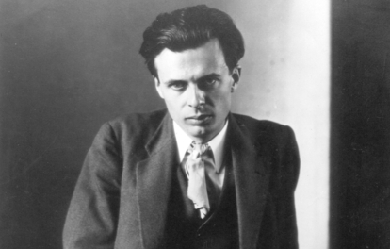
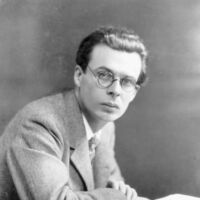
Aldous Leonard Huxley (26 July 1894 – 22 November 1963) was an English writer, philosopher and a prominent member of the Huxley family. He was best known for his novels including Brave New World, set in a dystopian London, and for non-fiction books, such as The Doors of Perception, which recalls experiences when taking a psychedelic drug, and a wide-ranging output of essays.
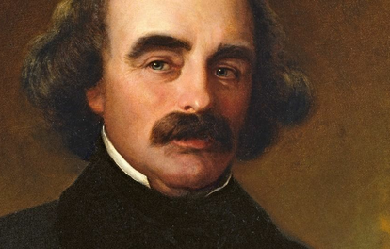
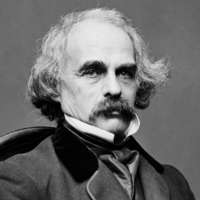
Nathaniel Hawthorne (July 4, 1804 – May 19, 1864) was an American novelist, dark romantic, and short story writer. He was born in 1804 in Salem, Massachusetts to Nathaniel Hathorne and the former Elizabeth Clarke Manning. His ancestors include John Hathorne, the only judge involved in the Salem witch trials who never repented of his actions. He entered Bowdoin College in 1821, was elected to Phi Beta Kappa in 1824, and graduated in 1825. He published his first work in 1828, the novel Fanshawe; he later tried to suppress it, feeling that it was not equal to the standard of his later work. He published several short stories in periodicals, which he collected in 1837 as Twice-Told Tales. The next year, he became engaged to Sophia Peabody. He worked at the Boston Custom House and joined Brook Farm, a transcendentalist community, before marrying Peabody in 1842. The couple moved to The Old Manse in Concord, Massachusetts, later moving to Salem, the Berkshires, then to The Wayside in Concord. The Scarlet Letter was published in 1850, followed by a succession of other novels. A political appointment as consul took Hawthorne and family to Europe before their return to Concord in 1860. Hawthorne died on May 19, 1864, and was survived by his wife and their three children. Much of Hawthorne’s writing centers on New England, many works featuring moral metaphors with an anti-Puritan inspiration. His fiction works are considered part of the Romantic movement and, more specifically, dark romanticism. His themes often center on the inherent evil and sin of humanity, and his works often have moral messages and deep psychological complexity. His published works include novels, short stories, and a biography of his college friend Franklin Pierce, the 14th President of the United States. Biography Early life Nathaniel Hawthorne was born on July 4, 1804, in Salem, Massachusetts; his birthplace is preserved and open to the public. William Hathorne was the author’s great-great-great-grandfather. He was a Puritan and was the first of the family to emigrate from England, settling in Dorchester, Massachusetts before moving to Salem. There he became an important member of the Massachusetts Bay Colony and held many political positions, including magistrate and judge, becoming infamous for his harsh sentencing. William’s son and the author’s great-great-grandfather John Hathorne was one of the judges who oversaw the Salem witch trials. Hawthorne probably added the “w” to his surname in his early twenties, shortly after graduating from college, in an effort to dissociate himself from his notorious forebears. Hawthorne’s father Nathaniel Hathorne, Sr. was a sea captain who died in 1808 of yellow fever in Suriname; he had been a member of the East India Marine Society. After his death, his widow moved with young Nathaniel and two daughters to live with relatives named the Mannings in Salem, where they lived for 10 years. Young Hawthorne was hit on the leg while playing “bat and ball” on November 10, 1813, and he became lame and bedridden for a year, though several physicians could find nothing wrong with him. In the summer of 1816, the family lived as boarders with farmers before moving to a home recently built specifically for them by Hawthorne’s uncles Richard and Robert Manning in Raymond, Maine, near Sebago Lake. Years later, Hawthorne looked back at his time in Maine fondly: “Those were delightful days, for that part of the country was wild then, with only scattered clearings, and nine tenths of it primeval woods.” In 1819, he was sent back to Salem for school and soon complained of homesickness and being too far from his mother and sisters. He distributed seven issues of The Spectator to his family in August and September 1820 for the sake of having fun. The homemade newspaper was written by hand and included essays, poems, and news featuring the young author’s adolescent humor. Hawthorne’s uncle Robert Manning insisted that the boy attend college, despite Hawthorne’s protests. With the financial support of his uncle, Hawthorne was sent to Bowdoin College in 1821, partly because of family connections in the area, and also because of its relatively inexpensive tuition rate. Hawthorne met future president Franklin Pierce on the way to Bowdoin, at the stage stop in Portland, and the two became fast friends. Once at the school, he also met future poet Henry Wadsworth Longfellow, future congressman Jonathan Cilley, and future naval reformer Horatio Bridge. He graduated with the class of 1825, and later described his college experience to Richard Henry Stoddard: I was educated (as the phrase is) at Bowdoin College. I was an idle student, negligent of college rules and the Procrustean details of academic life, rather choosing to nurse my own fancies than to dig into Greek roots and be numbered among the learned Thebans. Early career In 1836, Hawthorne served as the editor of the American Magazine of Useful and Entertaining Knowledge. At the time, he boarded with poet Thomas Green Fessenden on Hancock Street in Beacon Hill in Boston. He was offered an appointment as weigher and gauger at the Boston Custom House at a salary of $1,500 a year, which he accepted on January 17, 1839. During his time there, he rented a room from George Stillman Hillard, business partner of Charles Sumner. Hawthorne wrote in the comparative obscurity of what he called his “owl’s nest” in the family home. As he looked back on this period of his life, he wrote: “I have not lived, but only dreamed about living.” He contributed short stories to various magazines and annuals, including “Young Goodman Brown” and “The Minister’s Black Veil”, though none drew major attention to him. Horatio Bridge offered to cover the risk of collecting these stories in the spring of 1837 into the volume Twice-Told Tales, which made Hawthorne known locally. Marriage and family While at Bowdoin, Hawthorne wagered a bottle of Madeira wine with his friend Jonathan Cilley that Cilley would get married before Hawthorne did. By 1836, he had won the bet, but he did not remain a bachelor for life. He had public flirtations with Mary Silsbee and Elizabeth Peabody, then he began pursuing Peabody’s sister, illustrator and transcendentalist Sophia Peabody. He joined the transcendentalist Utopian community at Brook Farm in 1841, not because he agreed with the experiment but because it helped him save money to marry Sophia. He paid a $1,000 deposit and was put in charge of shoveling the hill of manure referred to as “the Gold Mine”. He left later that year, though his Brook Farm adventure became an inspiration for his novel The Blithedale Romance. Hawthorne married Sophia Peabody on July 9, 1842 at a ceremony in the Peabody parlor on West Street in Boston. The couple moved to The Old Manse in Concord, Massachusetts, where they lived for three years. His neighbor Ralph Waldo Emerson invited him into his social circle, but Hawthorne was almost pathologically shy and stayed silent at gatherings. At the Old Manse, Hawthorne wrote most of the tales collected in Mosses from an Old Manse. Like Hawthorne, Sophia was a reclusive person. Throughout her early life, she had frequent migraines and underwent several experimental medical treatments. She was mostly bedridden until her sister introduced her to Hawthorne, after which her headaches seem to have abated. The Hawthornes enjoyed a long and happy marriage. He referred to her as his “Dove” and wrote that she “is, in the strictest sense, my sole companion; and I need no other—there is no vacancy in my mind, any more than in my heart... Thank God that I suffice for her boundless heart!” Sophia greatly admired her husband’s work. She wrote in one of her journals: I am always so dazzled and bewildered with the richness, the depth, the... jewels of beauty in his productions that I am always looking forward to a second reading where I can ponder and muse and fully take in the miraculous wealth of thoughts. Poet Ellery Channing came to the Old Manse for help on the first anniversary of the Hawthornes’ marriage. A local teenager named Martha Hunt had drowned herself in the river and Hawthorne’s boat Pond Lily was needed to find her body. Hawthorne helped recover the corpse, which he described as “a spectacle of such perfect horror... She was the very image of death-agony”. The incident later inspired a scene in his novel The Blithedale Romance. The Hawthornes had three children. Their first was daughter Una, born March 3, 1844; her name was a reference to The Faerie Queene, to the displeasure of family members. Hawthorne wrote to a friend, “I find it a very sober and serious kind of happiness that springs from the birth of a child... There is no escaping it any longer. I have business on earth now, and must look about me for the means of doing it.” In October 1845, the Hawthornes moved to Salem. In 1846, their son Julian was born. Hawthorne wrote to his sister Louisa on June 22, 1846: “A small troglodyte made his appearance here at ten minutes to six o’clock this morning, who claimed to be your nephew.” Daughter Rose was born in May 1851, and Hawthorne called her his “autumnal flower”. Middle years In April 1846, Hawthorne was officially appointed as the “Surveyor for the District of Salem and Beverly and Inspector of the Revenue for the Port of Salem” at an annual salary of $1,200. He had difficulty writing during this period, as he admitted to Longfellow: I am trying to resume my pen... Whenever I sit alone, or walk alone, I find myself dreaming about stories, as of old; but these forenoons in the Custom House undo all that the afternoons and evenings have done. I should be happier if I could write. This employment, like his earlier appointment to the custom house in Boston, was vulnerable to the politics of the spoils system. Hawthorne was a Democrat and lost this job due to the change of administration in Washington after the presidential election of 1848. He wrote a letter of protest to the Boston Daily Advertiser which was attacked by the Whigs and supported by the Democrats, making Hawthorne’s dismissal a much-talked about event in New England. He was deeply affected by the death of his mother in late July, calling it “the darkest hour I ever lived”. He was appointed the corresponding secretary of the Salem Lyceum in 1848. Guests who came to speak that season included Emerson, Thoreau, Louis Agassiz, and Theodore Parker. Hawthorne returned to writing and published The Scarlet Letter in mid-March 1850, including a preface that refers to his three-year tenure in the Custom House and makes several allusions to local politicians—who did not appreciate their treatment. It was one of the first mass-produced books in America, selling 2,500 volumes within ten days and earning Hawthorne $1,500 over 14 years. The book was pirated by booksellers in London and became a best-seller in the United States; it initiated his most lucrative period as a writer. Hawthorne’s friend Edwin Percy Whipple objected to the novel’s “morbid intensity” and its dense psychological details, writing that the book “is therefore apt to become, like Hawthorne, too painfully anatomical in his exhibition of them”, though 20th-century writer D. H. Lawrence said that there could be no more perfect work of the American imagination than The Scarlet Letter. Hawthorne and his family moved to a small red farmhouse near Lenox, Massachusetts at the end of March 1850. He became friends with Herman Melville beginning on August 5, 1850 when the authors met at a picnic hosted by a mutual friend. Melville had just read Hawthorne’s short story collection Mosses from an Old Manse, and his unsigned review of the collection was printed in The Literary World on August 17 and August 24 entitled “Hawthorne and His Mosses”. Melville was composing Moby-Dick at the time, and he wrote that these stories revealed a dark side to Hawthorne, “shrouded in blackness, ten times black”. Melville dedicated Moby-Dick (1851) to Hawthorne: “In token of my admiration for his genius, this book is inscribed to Nathaniel Hawthorne.” Hawthorne’s time in the Berkshires was very productive. While there, he wrote The House of the Seven Gables (1851), which poet and critic James Russell Lowell said was better than The Scarlet Letter and called “the most valuable contribution to New England history that has been made.” He also wrote The Blithedale Romance (1852), his only work written in the first person. He also published A Wonder-Book for Girls and Boys in 1851, a collection of short stories retelling myths which he had been thinking about writing since 1846. Nevertheless, poet Ellery Channing reported that Hawthorne “has suffered much living in this place”. The family enjoyed the scenery of the Berkshires, although Hawthorne did not enjoy the winters in their small house. They left on November 21, 1851. Hawthorne noted, “I am sick to death of Berkshire... I have felt languid and dispirited, during almost my whole residence.” The Wayside and Europe In May 1852, the Hawthornes returned to Concord where they lived until July 1853. In February, they bought The Hillside, a home previously inhabited by Amos Bronson Alcott and his family, and renamed it The Wayside. Their neighbors in Concord included Emerson and Henry David Thoreau. That year, Hawthorne wrote The Life of Franklin Pierce, the campaign biography of his friend which depicted him as “a man of peaceful pursuits”. Horace Mann said, “If he makes out Pierce to be a great man or a brave man, it will be the greatest work of fiction he ever wrote.” In the biography, Hawthorne depicts Pierce as a statesman and soldier who had accomplished no great feats because of his need to make “little noise” and so “withdrew into the background”. He also left out Pierce’s drinking habits, despite rumors of his alcoholism, and emphasized Pierce’s belief that slavery could not “be remedied by human contrivances” but would, over time, “vanish like a dream”. With Pierce’s election as President, Hawthorne was rewarded in 1853 with the position of United States consul in Liverpool shortly after the publication of Tanglewood Tales. The role was considered the most lucrative foreign service position at the time, described by Hawthorne’s wife as “second in dignity to the Embassy in London”. His appointment ended in 1857 at the close of the Pierce administration, and the Hawthorne family toured France and Italy. During his time in Italy, the previously clean-shaven Hawthorne grew a bushy mustache. The family returned to The Wayside in 1860, and that year saw the publication of The Marble Faun, his first new book in seven years. Hawthorne admitted that he had aged considerably, referring to himself as “wrinkled with time and trouble”. Later years and death At the outset of the American Civil War, Hawthorne traveled with William D. Ticknor to Washington, D.C. where he met Abraham Lincoln and other notable figures. He wrote about his experiences in the essay “Chiefly About War Matters” in 1862. Failing health prevented him from completing several more romances. Hawthorne was suffering from pain in his stomach and insisted on a recuperative trip with his friend Franklin Pierce, though his neighbor Bronson Alcott was concerned that Hawthorne was too ill. While on a tour of the White Mountains, he died in his sleep on May 19, 1864 in Plymouth, New Hampshire. Pierce sent a telegram to Elizabeth Peabody asking her to inform Mrs. Hawthorne in person. Mrs. Hawthorne was too saddened by the news to handle the funeral arrangements herself. Hawthorne’s son Julian was a freshman at Harvard College, and he learned of his father’s death the next day; coincidentally, he was initiated into the Delta Kappa Epsilon fraternity on the same day by being blindfolded and placed in a coffin. Longfellow wrote a tribute poem to Hawthorne published in 1866 called “The Bells of Lynn”. Hawthorne was buried on what is now known as “Authors’ Ridge” in Sleepy Hollow Cemetery, Concord, Massachusetts. Pallbearers included Longfellow, Emerson, Alcott, Oliver Wendell Holmes Sr., James Thomas Fields, and Edwin Percy Whipple. Emerson wrote of the funeral: "I thought there was a tragic element in the event, that might be more fully rendered—in the painful solitude of the man, which, I suppose, could no longer be endured, & he died of it.” His wife Sophia and daughter Una were originally buried in England. However, in June 2006, they were reinterred in plots adjacent to Hawthorne. Writings Hawthorne had a particularly close relationship with his publishers William Ticknor and James Thomas Fields. Hawthorne once told Fields, “I care more for your good opinion than for that of a host of critics.” In fact, it was Fields who convinced Hawthorne to turn The Scarlet Letter into a novel rather than a short story. Ticknor handled many of Hawthorne’s personal matters, including the purchase of cigars, overseeing financial accounts, and even purchasing clothes. Ticknor died with Hawthorne at his side in Philadelphia in 1864; according to a friend, Hawthorne was left “apparently dazed”. Literary style and themes Hawthorne’s works belong to romanticism or, more specifically, dark romanticism, cautionary tales that suggest that guilt, sin, and evil are the most inherent natural qualities of humanity. Many of his works are inspired by Puritan New England, combining historical romance loaded with symbolism and deep psychological themes, bordering on surrealism. His depictions of the past are a version of historical fiction used only as a vehicle to express common themes of ancestral sin, guilt and retribution. His later writings also reflect his negative view of the Transcendentalism movement. Hawthorne was predominantly a short story writer in his early career. Upon publishing Twice-Told Tales, however, he noted, “I do not think much of them,” and he expected little response from the public. His four major romances were written between 1850 and 1860: The Scarlet Letter (1850), The House of the Seven Gables (1851), The Blithedale Romance (1852) and The Marble Faun (1860). Another novel-length romance, Fanshawe, was published anonymously in 1828. Hawthorne defined a romance as being radically different from a novel by not being concerned with the possible or probable course of ordinary experience. In the preface to The House of the Seven Gables, Hawthorne describes his romance-writing as using “atmospherical medium as to bring out or mellow the lights and deepen and enrich the shadows of the picture”. Critics have applied feminist perspectives and historicist approaches to Hawthorne’s depictions of women. Feminist scholars are interested particularly in Hester Prynne, who realized that she herself could not be the “destined prophetess,” but that “angel and apostle of the coming revelation” must be a woman." Camille Paglia saw Hester as mystical, “a wandering goddess still bearing the mark of her Asiatic origins... moving serenely in the magic circle of her sexual nature”. Lauren Berlant termed Hester "the citizen as woman [personifying] love as a quality of the body that contains the purest light of nature," her resulting “traitorous political theory” a “Female Symbolic” literalization of futile Puritan metaphors. Historicists view Hester as a protofeminist and avatar of the self-reliance and responsibility that led to women’s suffrage and reproductive emancipation. Anthony Splendora found her literary genealogy among other archetypally fallen but redeemed women, both historic and mythic. As examples, he offers Psyche of ancient legend; Heloise of twelfth-century France’s tragedy involving world-renowned philosopher Peter Abelard; Anne Hutchinson (America’s first heretic, circa 1636), and Hawthorne family friend Margaret Fuller. In Hester’s first appearance, Hawthorne likens her, “infant at her bosom”, to Mary, Mother of Jesus, “the image of Divine Maternity”. In her study of Victorian literature, in which such “galvanic outcasts” as Hester feature prominently, Nina Auerbach went so far as to name Hester’s fall and subsequent redemption, “the novel’s one unequivocally religious activity”. Regarding Hester as a deity figure, Meredith A. Powers found in Hester’s characterization “the earliest in American fiction that the archetypal Goddess appears quite graphically,” like a Goddess “not the wife of traditional marriage, permanently subject to a male overlord”; Powers noted “her syncretism, her flexibility, her inherent ability to alter and so avoid the defeat of secondary status in a goal-oriented civilization”. Aside from Hester Prynne, the model women of Hawthorne’s other novels—from Ellen Langton of Fanshawe to Zenobia and Priscilla of The Blithedale Romance, Hilda and Miriam of The Marble Faun and Phoebe and Hepzibah of The House of the Seven Gables—are more fully realized than his male characters, who merely orbit them. This observation is equally true of his short-stories, in which central females serve as allegorical figures: Rappaccini’s beautiful but life-altering, garden-bound, daughter; almost-perfect Georgiana of “The Birthmark”; the sinned-against (abandoned) Ester of “Ethan Brand”; and goodwife Faith Brown, linchpin of Young Goodman Brown’s very belief in God. “My Faith is gone!” Brown exclaims in despair upon seeing his wife at the Witches’ Sabbath.. Hawthorne also wrote nonfiction. In 2008, Library of America selected Hawthorne’s “A show of wax-figures” for inclusion in its two-century retrospective of American True Crime. Criticism Edgar Allan Poe wrote important, and somewhat unflattering, reviews of both Twice-Told Tales and Mosses from an Old Manse. Poe’s negative assessment was partly due to his own contempt of allegory and moral tales, and his chronic accusations of plagiarism, though he admitted, The style of Mr. Hawthorne is purity itself. His tone is singularly effective—wild, plaintive, thoughtful, and in full accordance with his themes... We look upon him as one of the few men of indisputable genius to whom our country has as yet given birth. Ralph Waldo Emerson wrote, “Nathaniel Hawthorne’s reputation as a writer is a very pleasing fact, because his writing is not good for anything, and this is a tribute to the man.” Henry James praised Hawthorne, saying, “The fine thing in Hawthorne is that he cared for the deeper psychology, and that, in his way, he tried to become familiar with it.” Poet John Greenleaf Whittier wrote that he admired the “weird and subtle beauty” in Hawthorne’s tales. Evert Augustus Duyckinck said of Hawthorne, “Of the American writers destined to live, he is the most original, the one least indebted to foreign models or literary precedents of any kind.” Contemporary response to Hawthorne’s work praised his sentimentality and moral purity while more modern evaluations focus on the dark psychological complexity. Beginning in the 1950s, critics have focused on symbolism and didacticism. The critic Harold Bloom has opined that only Henry James and William Faulkner challenge Hawthorne’s position as the greatest American novelist, although he admits that he favors James as the greatest American novelist. Bloom sees Hawthorne’s greatest works to be principally The Scarlet Letter, followed by The Marble Faun and certain short stories, including “My Kinsman, Major Molineux”, “Young Goodman Brown”, “Wakefield”, and “Feathertop”. Selected works * The “definitive edition” of Hawthorne’s works is The Centenary Edition of the Works of Nathaniel Hawthorne, edited by William Charvat and others, published by The Ohio State University Press in twenty-three volumes between 1962 and 1997. Tales and Sketches (1982) was the second volume to be published in the Library of America, Collected Novels (1983) the tenth. Novels * Fanshawe (published anonymously, 1828) * The New Adam and Eve (1843) * The Scarlet Letter (1850) * The House of the Seven Gables (1851) * The Blithedale Romance (1852) * The Marble Faun: Or, The Romance of Monte Beni (1860) (as Transformation: Or, The Romance of Monte Beni, UK publication, same year) * The Dolliver Romance (1863) (unfinished) * Septimius Felton; or, the Elixir of Life (unfinished, published in the Atlantic Monthly, 1872) * Doctor Grimshawe’s Secret: A Romance (unfinished, with preface and notes by Julian Hawthorne, 1882) Short story collections * Twice-Told Tales (1837) * Grandfather’s Chair (1840) * Mosses from an Old Manse (1846) * A Wonder-Book for Girls and Boys (1851) * The Snow-Image, and Other Twice-Told Tales (1852) * Tanglewood Tales (1853) * The Dolliver Romance and Other Pieces (1876) * The Great Stone Face and Other Tales of the White Mountains (1889) Selected short stories * “Roger Malvin’s Burial” (1832) * “My Kinsman, Major Molineux” (1832) * “The Minister’s Black Veil” (1832) * “Young Goodman Brown” (1835) * “The Gray Champion” (1835) * “The White Old Maid” (1835) * “Wakefield” (1835) * “The Ambitious Guest” (1835) * “The Man of Adamant” (1837) * “The May-Pole of Merry Mount” (1837) * “The Great Carbuncle” (1837) * “Dr. Heidegger’s Experiment” (1837) * “A Virtuoso’s Collection” (May 1842) * “The Birth-Mark” (March 1843) * “The Celestial Railroad” (1843) * “Egotism; or, The Bosom-Serpent” (1843) * “Rappaccini’s Daughter” (1844) * “P.'s Correspondence” (1845) * “The Artist of the Beautiful” (1846) * “Fire Worship” (1846) * “Ethan Brand” (1850) * “The Great Stone Face” (1850) * “Feathertop” (1852) Nonfiction * Twenty Days with Julian & Little Bunny (written 1851, published 1904) * Our Old Home (1863) * Passages from the French and Italian Notebooks (1871) References Wikipedia—https://en.wikipedia.org/wiki/Nathaniel_Hawthorne
.jpg)
45 year;s old.... mother of 5 grandmother to 3 and counting. married 22 years. Lives on a little mountain in NH. I write from my heart.. And my heart can't lie.. It can't hide and God willing will never Die...Even after i am someday laid to rest.. my children and their children will have a story to tell.. one that Grandma weaved....And was anxious to tell.
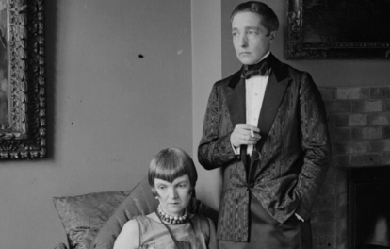
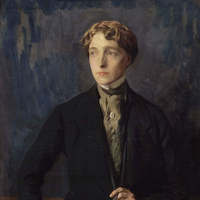
Marguerite Radclyffe Hall (12 August 1880– 7 October 1943) was an English poet and author. She is best known for the novel The Well of Loneliness, a groundbreaking work in lesbian literature. Life Marguerite Radclyffe Hall was born in 1880 at “Sunny Lawn”, Durley Road, Bournemouth, Hampshire (now Dorset), to a wealthy philandering father, Radclyffe Radclyffe-Hall, and an unstable mother, Mary Jane Diehl. Her stepfather was the professor of singing Albert Visetti, whom she did not like and who had a tempestuous relationship with her mother. Hall was a lesbian and described herself as a “congenital invert”, a term taken from the writings of Havelock Ellis and other turn-of-the-century sexologists. Having reached adulthood without a vocation, she spent much of her twenties pursuing women she eventually lost to marriage. In 1907 at the Bad Homburg spa in Germany, Hall met Mabel Batten, a well-known amateur singer of lieder. Batten (nicknamed “Ladye”) was 51 to Hall’s 27, and was married with an adult daughter and grandchildren. They fell in love, and after Batten’s husband died they set up residence together. Batten gave Hall the nickname John, which she used the rest of her life. In 1915 Hall fell in love with Mabel Batten’s cousin Una Troubridge (1887–1963), a sculptor who was the wife of Vice-Admiral Ernest Troubridge, and the mother of a young daughter. Batten died the following year, and in 1917 Radclyffe Hall and Una Troubridge began living together. From 1924 to 1929 they lived at 37 Holland Street, Kensington, London. The relationship would last until Hall’s death. In 1934 Hall fell in love with Russian émigrée Evguenia Souline and embarked upon a long-term affair with her, which Troubridge painfully tolerated. She became involved in affairs with other women throughout the years. Later years and death Hall lived with Troubridge in London and, during the 1930s, in the tiny town of Rye, East Sussex, noted for its many writers, including her contemporary the novelist E. F. Benson. Hall died at age 63 of colon cancer, and is interred at Highgate Cemetery in North London at the entrance of the chamber of the Batten family, where Mabel is buried as well. In 1930, Hall received the Gold Medal of the Eichelbergher Humane Award. She was a member of the PEN club, the Council of the Society for Psychical Research and a fellow of the Zoological Society. Radclyffe Hall was listed at number sixteen in the top 500 lesbian and gay heroes in The Pink Paper. Novels Hall’s first novel was The Unlit Lamp, the story of Joan Ogden, a young girl who dreams of setting up a flat in London with her friend Elizabeth (a so-called Boston marriage) and studying to become a doctor, but feels trapped by her manipulative mother’s emotional dependence on her. Its length and grimness made it a difficult book to sell, so she deliberately chose a lighter theme for her next novel, a social comedy entitled The Forge. While she had used her full name for her early poetry collections, she shortened it to M. Radclyffe Hall for The Forge. The book was a modest success, making the bestseller list of John O’London’s Weekly. The Unlit Lamp, which followed it into print, was the first of her books to give the author’s name simply as Radclyffe Hall. There followed another comic novel, A Saturday Life (1925), and then Adam’s Breed (1926), a novel about an Italian headwaiter who, becoming disgusted with his job and even with food itself, gives away his belongings and lives as a hermit in the forest. The book’s mystical themes have been compared to Hermann Hesse’s Siddhartha. It sold well, was critically acclaimed, and won both the Prix Femina and the James Tait Black Prize, a feat previously achieved only by E. M. Forster’s A Passage to India. The Well of Loneliness Hall’s best-known work was The Well of Loneliness, the only one of her eight novels to have overt lesbian themes. Published in 1928, The Well of Loneliness deals with the life of Stephen Gordon, a masculine lesbian who, like Hall herself, identifies as an “invert”. Although The Well of Loneliness is not sexually explicit, it was nevertheless the subject of an obscenity trial in the UK, which resulted in all copies of the novel being ordered destroyed. The United States allowed its publication only after a long court battle. It is currently published in the UK by Virago, and by Anchor Press in the United States. The Well of Loneliness was number seven on a list of the top 100 lesbian and gay novels compiled by The Publishing Triangle in 1999. Later novels An anonymous verse lampoon entitled The Sink of Solitude appeared during the controversy over The Well. Although its primary targets were James Douglas, who had called for The Well’s suppression, and the Home Secretary William Joynson-Hicks, who had started legal proceedings, it also mocked Hall and her book. One of the illustrations, which depicted Hall nailed to a cross, so horrified her that she could barely speak of it for years afterward. Her sense of guilt at being depicted in a drawing that she saw as blasphemous led to her choice of a religious subject for her next novel, The Master of the House. At Hall’s insistence, The Master of the House was published with no cover blurb, which may have misled some purchasers into thinking it was another novel about “inversion”. Advance sales were strong, and the book made No. 1 on The Observer’s bestseller list, but it received poor reviews in several key periodicals, and sales soon dropped off. In the United States reviewers treated the book more kindly, but shortly after the book’s publication, all copies were seized—not by the police, but by creditors. Hall’s American publisher had gone bankrupt. Houghton Mifflin took over the rights, but by the time the book could be republished, its sales momentum was lost. The Girls of Radcliff Hall The British composer and bon-vivant Gerald Tyrwhitt-Wilson, 14th Baron Berners, wrote a roman à clef girls’ school story entitled The Girls of Radcliff Hall, in which he depicts himself and his circle of friends, including Cecil Beaton and Oliver Messel, as lesbian schoolgirls at a school named “Radcliff Hall”. The novel was written under the pseudonym “Adela Quebec” and published and distributed privately; the indiscretions to which it alluded created an uproar among Berners’s intimates and acquaintances, making the whole affair highly discussed in the 1930s. Cecil Beaton attempted to have all the copies destroyed. The novel subsequently disappeared from circulation, making it extremely rare. The story is, however, included in Berners’ Collected Tales and Fantasies. Works Novels * The Forge (1924) * The Unlit Lamp (1924) * A Saturday Life (1925) * Adam's Breed (1926) * The Well of Loneliness (1928) * The Master of the House (1932) * Miss Ogilvy Finds Herself (1926) * The Sixth Beatitude (William Heineman Ltd, London, 1936) Poetry * Dedicated to Sir Arthur Sullivan (England: s.n., 1894) * Twixt Earth and Stars (London: John and Edward Bumpus Ltd., 1906) * A Sheaf of Verses : Poems (London: J. and E. Bumpus, 1908) * Poems of the Past & Present (London: Chapman And Hall, 1910) * Songs of Three Counties and Other Poems (London: Chapman & Hall, 1913) * The Forgotten Island (London: Chapman & Hall, 1915) * Rhymes and Rhythms (Milan, 1948) References Wikipedia—https://en.wikipedia.org/wiki/Radclyffe_Hall
I was born in Alabama. Lived the first 9 years of my life in Florida, but then moved back to Alabama after my grandmother passed away to live in her house. I've been here ever since and I absolutely love it. I am married to a wonderful man who is my best friend. I'm surrounded by my family and friends and beautiful nature. I am a follower of Christ. I've always loved to write. When I was little, I would write my parents little notes and slide them underneath the door of whatever room they were in. I just loved to touch people through my words. Verbally and on paper. When I became a teenager, I started to write random poetry for fun, but also for school. I realized that it wasn't homework for me to write, it was a joy. My poetry streak really took off at the age of 15. Now, having recently turned 30, I have been through a lot in the past decade and have not written as much as i used to. Ups and downs, highs and lows, defeats and victories...you name it. I've felt a lot of different emotions and thought many thoughts. And I've composed quite a few poems and written many songs through it all. So, this is my place to share them with the world, to touch others through my words. I hope they mean something to you. Thank you.
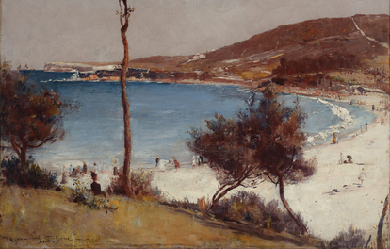
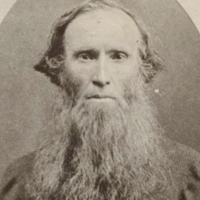
Charles Harpur (23 January 1813– 10 June 1868) was an Australian poet. He was born on 23 January 1813 at Windsor, New South Wales, the third child of Joseph Harpur—originally from Kinsale, County Cork, Ireland, parish clerk and master of the Windsor district school—and Sarah, née Chidley (from Somerset; both had been transported.) Harpur received his elementary education in Windsor. This was probably largely supplemented by private study; he was an eager reader of William Shakespeare. Harpur followed various avocations in the bush and for some years in his twenties held a clerical position at the post office in Sydney.
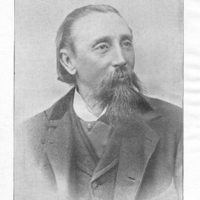
John Hartley (1839-1915) was an English poet who worked in the Yorkshire dialect. He wrote a great deal of prose and poetry – often of a sentimental nature – dealing with the poverty of the district. He was born in Halifax, West Yorkshire. Hartly wrote and edited the Original Illuminated Clock Almanack from 1866 to his death. Most of Hartley’s works are written in dialect. Hartley wrote a number of books featuring the character “Sammywell Grimes”, who has a number of adventures and suffers unfortunate mishaps. Works * Yorkshire Ditties, First Series * Yorkshire Ditties, Second Series * Yorkshire Tales, First Series * Yorkshire Tales, Second Series * Yorkshire Tales, Third Series * Yorkshire Lyrics (1898) * Pensive Poems and Startling Stories * A Rolling Stone. A Tale of Wrongs and Revenge * Mally An’ Me: A selection of Humorous and Pathetic Incidents from the Life of Sammywell Grimes and His Wife Mally (1902) * Yorksher Puddin (1876) * A Sheaf from the Moorland– A Collection of Original Poems * Grimes’ Visit To Th’ Queen. A Royal Time Amang Royalties * Seets I’Lundun: A Yorkshireman’s Ten Days’ Trip * Seets i’ Yorkshire and Lancashire or Grimes’ Comical Trip from Leeds to Liverpool by Canal * Seets i’ Blackpool– Grimes at the Seaside * Seets i’ Paris– Sammywell Grimes’s trip with his old chum Billy Baccus; his opinion o’th’ French, and th’ French opinion o’th’ exhibition he made ov hissen. * Grimes’ Trip to America– Ten letters from Sammywell to John Jones Smith * Sammywell Grimes An’ his Wife Mally Laikin I’ Lakeland: A Humorous Account of their Visit to the Home of Famous Poets, &c., &c. External links * Works by John Hartley at Project Gutenberg * Works by or about John Hartley at Internet Archive * Works by John Hartley at LibriVox (public domain audiobooks) * Yorkshire Ditties by John Hartley– Link fails 25 October 2008– permissions * John Hartley at Old Poetry References Wikipedia—https://en.wikipedia.org/wiki/John_Hartley_(poet)

Now, My Words: Past I'm an enthusiast and connoisseur of my passions for music, movies, fishing, hunting, and hiking in woods, mountains, what have you for clear mind and exploration of known and unknown realms of reality and fantasy through writing. My admiration for these endeavors comes from no product, mental or physical , at the event's end but an addictive high from the process of participating. Playing the drums or listening to guitar, acting or viewing, keeping or tossing, Taking or passing, seeking or denying. It has, is, and always will be at the hands of amusement through partaking in whatever occurrence. The passion of writing
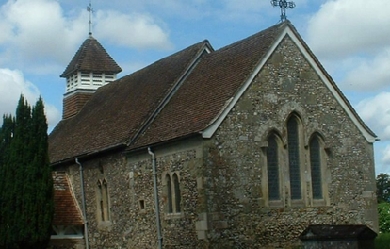
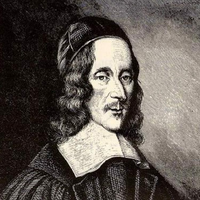
George Herbert (3 April 1593 – 1 March 1633) was a Welsh poet, orator and Anglican priest. Herbert’s poetry is associated with the writings of the metaphysical poets, and he is recognized as “a pivotal figure: enormously popular, deeply and broadly influential, and arguably the most skilful and important British devotional lyricist.” Born into an artistic and wealthy family, Herbert received a good education that led to his admission in 1609 as a student at Trinity College, Cambridge, where Herbert excelled in languages, rhetoric and music. He went to university with the intention of becoming a priest, but when eventually he became the University’s Public Orator he attracted the attention of King James I and may well have seen himself as a future Secretary of State. In 1624 and briefly in 1625 he served in the Parliament of England. After the death of King James, Herbert’s interest in ordained ministry was renewed. In his mid-thirties he gave up his secular ambitions and took holy orders in the Church of England, spending the rest of his life as the rector of the little parish of St Andrews Church, Lower Bemerton, Salisbury. He was noted for unfailing care for his parishioners, bringing the sacraments to them when they were ill, and providing food and clothing for those in need. Henry Vaughan called him “a most glorious saint and seer”. Never a healthy man, he died of consumption at the early age of 39. Throughout his life, he wrote religious poems characterized by a precision of language, a metrical versatility, and an ingenious use of imagery or conceits that was favoured by the metaphysical school of poets. Charles Cotton described him as a “soul composed of harmonies”. Some of Herbert’s poems have endured as popular hymns, including “King of Glory, King of Peace” (Praise): “Let All the World in Every Corner Sing” (Antiphon) and “Teach me, my God and King” (The Elixir). Herbert’s first biographer, Izaak Walton, wrote that he composed “such hymns and anthems as he and the angels now sing in heaven”. Biography Early life and education George Herbert was born 3 April 1593 in Montgomery, Powys, Wales, the son of Richard Herbert (died 1596) and his wife Magdalen née Newport, the daughter of Sir Richard Newport (1511–70). He was one of 10 children. The Herbert family was wealthy and powerful in both national and local government, and George was descended from the same stock as the Earls of Pembroke. His father was a Member of Parliament, a justice of the peace, and later served for several years as high sheriff and later custos rotulorum (keeper of the rolls) of Montgomeryshire. His mother Magdalen was a patron and friend of clergyman and poet John Donne and other poets, writers and artists. As George’s godfather, Donne stood in after Richard Herbert died when George was three years old. Herbert and his siblings were then raised by his mother who helped push for a good education for her children. Herbert’s eldest brother Edward (who inherited his late father’s estates and was ultimately created Baron Herbert of Cherbury) became a soldier, diplomat, historian, poet, and philosopher whose religious writings led to his reputation as the “father of English deism”. Herbert entered Westminster School at or around the age of 12 as a day pupil, although later he became a residential scholar. He was admitted on scholarship to Trinity College, Cambridge in 1609, and graduated first with a Bachelor’s and then with a master’s degree in 1616 at the age of 23. Subsequently, Herbert was elected a major fellow of his college and then appointed Reader in Rhetoric. In 1620 he stressed his fluency in Latin and Greek and attained election to the post of the University’s Public Orator, a position he held until 1628. In 1624, supported by his kinsman the 3rd Earl of Pembroke, Herbert became a Member of Parliament, representing Montgomery. While these positions normally presaged a career at court, and King James I had shown him favour, circumstances worked against Herbert: the King died in 1625, and two influential patrons also died at about the same time. However, his parliamentary career may have ended already because, although a Mr Herbert is mentioned as a committee member, the Commons Journal for 1625 never mentions Mr. George Herbert, despite the preceding parliament’s careful distinction. In short, Herbert made a shift in his path, he angled away from the political future he had been pursuing and turned more fully toward a future in the church. Herbert was presented with the Prebendary of Leighton Bromswold in the Diocese of Lincoln in 1626, whilst he was still a don at Trinity College, Cambridge but not yet ordained. He was not even present at his institution as prebend as it is recorded that Peter Walker, his clerk, stood in as his proxy. In the same year his close Cambridge friend Nicholas Ferrar was ordained Deacon in Westminster Abbey by Bishop Laud on Trinity Sunday 1626 and went to Little Gidding, two miles down the road from Leighton Bromswold, to found the remarkable community with which his name has ever since been associated. Herbert raised money (including the use of his own) to restore the neglected church building at Leighton. Priesthood In 1629, Herbert decided to enter the priesthood and was appointed rector of the small rural parish of Fugglestone St Peter with Bemerton, near Salisbury in Wiltshire, about 75 miles south west of London. Here he lived, preached and wrote poetry; he also helped to rebuild the Bemerton church and rectory out of his own funds. While at Bemerton, Herbert revised and added to his collection of poems entitled The Temple. He also wrote a guide to rural ministry entitled A Priest to the Temple or, The County Parson His Character and Rule of Holy Life, which he himself described as “a Mark to aim at”, and which has remained influential to this day. Having married shortly before taking up his post, he and his wife gave a home to three orphaned nieces. Together with their servants, they crossed the lane for services in the small St Andrew’s church twice every day. Twice a week Herbert made the short journey into Salisbury to attend services at the Cathedral, and afterwards would make music with the cathedral musicians. But his time at Bemerton was short. Having suffered for most of his life from poor health, in 1633 Herbert died of consumption only three years after taking holy orders. Shortly before his death, he sent the manuscript of The Temple to Nicholas Ferrar, the founder of a semi-monastic Anglican religious community at Little Gidding, reportedly telling him to publish the poems if he thought they might “turn to the advantage of any dejected poor soul”, otherwise to burn them. Thanks to Ferrar, they were published not long after his death. Poetry Herbert wrote poetry in English, Latin and Greek. In 1633 all of Herbert’s English poems were published in The Temple: Sacred Poems and Private Ejaculations, with a preface by Nicholas Ferrar. The book went through eight editions by 1690. According to Isaac Walton, when Herbert sent the manuscript to Ferrar, he said that “he shall find in it a picture of the many spiritual conflicts that have passed between God and my soul, before I could subject mine to the will of Jesus, my Master”. In this Herbert used the format of the poems to reinforce the theme he was trying to portray. Beginning with “The Church Porch”, they proceed via “The Altar” to “The Sacrifice”, and so onwards through the collection. All of Herbert’s surviving English poems are on religious themes and are characterised by directness of expression enlivened by original but apt conceits in which, in the Metaphysical manner, the likeness is of function rather than visual. In “The Windows”, for example, he compares a righteous preacher to glass through which God’s light shines more effectively than in his words. Commenting on his religious poetry later in the 17th century, Richard Baxter said, “Herbert speaks to God like one that really believeth in God, and whose business in the world is most with God. Heart-work and heaven-work make up his books”. Helen Gardner later added “head-work” to this characterisation in acknowledgement of his “intellectual vivacity”. It has also been pointed out how Herbert uses puns and wordplay to “convey the relationships between the world of daily reality and the world of transcendent reality that gives it meaning. The kind of word that functions on two or more planes is his device for making his poem an expression of that relationship.” Visually too the poems are varied in such a way as to enhance their meaning, with intricate rhyme schemes, stanzas combining different line lengths and other ingenious formal devices. The most obvious examples are pattern poems like “The Altar,” in which the shorter and longer lines are arranged on the page in the shape of an altar. The visual appeal is reinforced by the conceit of its construction from a broken, stony heart, representing the personal offering of himself as a sacrifice upon it. Built into this is an allusion to Psalm 51:17: “The sacrifices of God are a broken spirit; a broken and a contrite heart.” In the case of “Easter Wings” (illustrated here), the words were printed sideways on two facing pages so that the lines there suggest outspread wings. The words of the poem are paralleled between stanzas and mimic the opening and closing of the wings. In Herbert’s poems formal ingenuity is not an end in itself but is employed only as an auxiliary to its meaning. The formal devices employed to convey that meaning are wide in range. In his meditation on the passage “Our life is hid with Christ in God”, the capitalised words ‘My life is hid in him that is my treasure’ move across successive lines and demonstrate what is spoken of in the text. Opposites are brought together in “Bitter-Sweet” for the same purpose. Echo and variation are also common. The exclamations at the head and foot of each stanza in “Sighs and Grones” are one example. The diminishing truncated rhymes in “Paradise” are another. There is also an echo-dialogue after each line in “Heaven”, other examples of which are found in the poetry of his brother Lord Herbert of Cherbury. Alternative rhymes are offered at the end of the stanzas in “The Water-Course”, while the "Mary/Army Anagram" is represented in its title. Once the taste for this display of Baroque wit had passed, the satirist John Dryden was to dismiss it as so many means to “torture one poor word ten thousand ways”. Though Herbert remained esteemed for his piety, the poetic skill with which he expressed his thought had to wait centuries to be admired again. Prose Herbert’s only prose work, A Priest to the Temple (usually known as The Country Parson), offers practical advice to rural clergy. In it, he advises that “things of ordinary use” such as ploughs, leaven, or dances, could be made to “serve for lights even of Heavenly Truths”. It was first published in 1652 as part of Herbert’s Remains, or Sundry Pieces of That Sweet Singer, Mr. George Herbert, edited by Barnabas Oley. The first edition was prefixed with unsigned preface by Oley, which was used as one of the sources for Izaak Walton’s biography of Herbert, first published in 1670. The second edition appeared in 1671 as A Priest to the Temple or the Country Parson, with a new preface, this time signed by Oley. Like many of his literary contemporaries, Herbert was a collector of proverbs. His Outlandish Proverbs was published in 1640, listing over 1000 aphorisms in English, but gathered from many countries (in Herbert’s day, 'outlandish’ meant foreign). The collection included many sayings repeated to this day, for example, “His bark is worse than his bite” and “Who is so deaf, as he that will not hear?” These and an additional 150 proverbs were included in a later collection entitled Jacula Prudentum (sometimes seen as Jacula Prudentium), dated 1651 and published in 1652 as part of Oley’s Herbert’s Remains. Musical settings Herbert was a skilled lutenist who “sett his own lyricks or sacred poems”. Musical pursuits interested him all though his life and his biographer, Isaac Walton, records that he rose to play the lute during his final illness. With such fitness for music in mind, it is no surprise to find that more than ninety of his poems have been set for singing over the centuries, some of them multiple times. Beginning in his own century, there were settings of “Longing” by Henry Purcell and “And art thou grieved” by John Blow. Some forty were adapted for the Methodist hymnal by the Wesley brothers, among them “Teach me my God and King”, which found its place in one version or another in 223 hymnals. Another poem, “Let all the world in every corner sing”, was published in 103 hymnals, of which one is a French version. Other languages into which his work has been translated for musical settings include Spanish, Catalan and German. In the 20th century, “Vertue” alone achieved ten settings, one of them in French. Among leading modern musicians who set his work were Ralph Vaughan-Williams, who used four by Herbert in "5 Mystical Songs"; Benjamin Britten and William Walton, both of whom set "Antiphon 2"; Ned Rorem who included one in his "10 poems for voice, oboe and strings" (1982); and Judith Weir, whose 2005 choral work Vertue includes three poems by Herbert. Legacy The earliest portrait of George Herbert was engraved long after his death by Robert White for Walton’s biography of the poet in 1674 (see above). Now in London’s National Portrait Gallery, it served as basis for later engravings, such as those by White’s apprentice John Sturt and Henry Hoppner Meyer’s of 1829. Among later artistic commemorations is William Dyce’s oil painting of “George Herbert at Bemerton” (1860) in the Guildhall Art Gallery. The poet is pictured in his riverside garden, prayer book in hand. Over the meadows is Salisbury Cathedral, where he used to join in the musical evensong; his lute leans against a stone bench and against a tree a fishing rod is propped, a reminder of his first biographer, Isaac Walton. There is also a musical reference in Charles West Cope’s “George Herbert and his mother” (1872) in Gallery Oldham. The mother points a poem out to him with an arm twined round his neck in a room that has a virginal in the background. Most representations of Herbert, however, are in stained glass windows, of which there are several in churches and cathedrals. They include Westminster Abbey, Salisbury Cathedral and All Saints Church, Cambridge. His own St Andrew’s Church in Bemerton installed a memorial window, which he shares with Nicholas Ferrar, in 1934. In addition, there is a statue of Herbert in his canonical robes, based in part on the Robert White portrait, in a niche on the West Front of Salisbury Cathedral. In the liturgy too George Herbert is commemorated on 27 February throughout the Anglican Communion and on 1 March of the Calendar of Saints of the Evangelical Lutheran Church in America. There are various collects for the day, of which one is based on his poem “The Elixir”: Our God and King, who called your servant George Herbert from the pursuit of worldly honors to be a pastor of souls, a poet, and a priest in your temple: Give us grace, we pray, joyfully to perform the tasks you give us to do, knowing that nothing is menial or common that is done for your sake... Amen. Works * 1623: Oratio Qua auspicatissimum Serenissimi Principis Caroli. * 1627: Memoriae Matris Sacrum, printed with A Sermon of commemoracion of the ladye Danvers by John Donne... with other Commemoracions of her by George Herbert (London: Philemon Stephens and Christopher Meredith). * 1633: The Temple, Sacred Poems and Private Ejaculations. (Cambridge: Printed by Thomas Buck and Roger Daniel). * 1652: Herbert’s Remains, Or, Sundry Pieces Of that sweet Singer of the Temple consisting of his collected writings from A Priest to the Temple, Jacula Prudentum, Sentences, & c., as well as a letter, several prayers, and three Latin poems.(London: Printed for Timothy Garthwait) References Wikipedia—https://en.wikipedia.org/wiki/George_Herbert

This blog observes a teenage boy (myself) who struggles with external, internal, and eternal problems. He does his best to stay the path he has been told is "right", but as he goes, he asks himself philosophical questions on what is "right" or "just" and why he is chained to the path he questions.
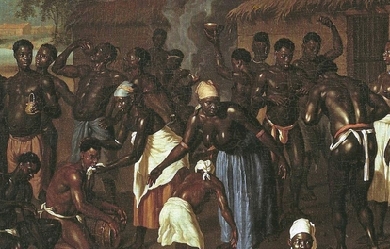
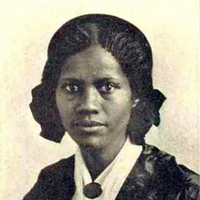
Frances Ellen Watkins Harper (September 24, 1825– February 22, 1911) was an African-American abolitionist, suffragist, poet and author. She was also active in other types of social reform and was a member of the Women’s Christian Temperance Union, which advocated the federal government taking a role in progressive reform. Born free in Baltimore, Maryland, she had a long and prolific career, publishing her first book of poetry at age 20 and her widely praised Iola Leroy, at age 67. In 1850, she became the first woman to teach sewing at the Union Seminary. In 1851, alongside William Still, chairman of the Pennsylvania Abolition Society, she helped escaped slaves along the Underground Railroad on their way to Canada. She began her career as a public speaker and political activist after joining the American Anti-Slavery Society in 1853. Poems on Miscellaneous Subjects (1854) became her biggest commercial success. Her short story “Two Offers” was published in the Anglo-African in 1859. She published Sketches of Southern Life in 1872. It detailed her experience touring the South and meeting newly freed Black people. In these poems she described the harsh living conditions of many. After the Civil War she continued to fight for the rights of women, African Americans, and many other social causes. She helped or held high office in several national progressive organizations. In 1873 Harper became superintendent of the Colored Section of the Philadelphia and Pennsylvania Women’s Christian Temperance Union. In 1894 she helped found the National Association of Colored Women and served as its vice president. Harper died February 22, 1911, nine years before women gained the right to vote. Her funeral service was held at the Unitarian Church on Chestnut Street in Philadelphia. She was buried in Eden Cemetery, next to her daughter, who had died two years before. Life and Works Early Life and Education Frances Ellen Watkins was born to free parents in Baltimore, Maryland. After her mother died when she was three years old in 1828, Watkins was orphaned. She was raised by her maternal aunt and uncle, Rev. William Watkins, who was a civil rights activist. She was educated at his Academy for Negro Youth. Watkins was a major influence on her life and work. At fourteen, Frances found work as a seamstress. Writing career Frances Watkins had her first volume of verse, Forest Leaves, published in 1845 when she was 20. Her second book, Poems on Miscellaneous Subjects (1854), was extremely popular. Over the next few years, it was reprinted numerous times. In 1859, her story “The Two Offers” was published in Anglo-African Magazine, making her the first Black woman to publish a short story. She continued to publish poetry and short stories. She had three novels serialized in a Christian magazine from 1868 to 1888, but was better known for what was long considered her first novel, Iola Leroy, or Shadows Uplifted (1892), published as a book when she was 67. At one time considered the first novel by an African American, it is one of the earliest. (Discoveries of earlier works by Harriet E. Wilson and William Wells Brown have displaced Harper’s work.) While using the conventions of the time, she dealt with serious social issues, including education for women, passing, miscegenation, abolition, reconstruction, temperance, and social responsibility. Teaching and Public Activism In 1850, Watkins moved to Ohio, where she worked as the first female teacher at Union Seminary, established by the Ohio Conference of the African Methodist Episcopal Church. (Union closed in 1863 when the AME Church diverted its funds to purchase Wilberforce University, the first black-owned and operated college.) The school in Wilberforce was run by the Rev. John Mifflin Brown, later a bishop in the AME Church. In 1853, Watkins joined the American Anti-Slavery Society and became a traveling lecturer for the group. In 1854, Watkins delivered her first anti-slavery speech on “Education and the Elevation of Colored Race”. The success of this speech resulted in a two-year lecture tour in Maine for the Anti-Slavery Society. She continued to travel, lecturing throughout the East and Midwest from 1856 to 1860. Progressive Causes Frances Watkins Harper was a strong supporter of abolitionism, prohibition and woman’s suffrage, progressive causes which were connected before and after the American Civil War.. She was also active in the Unitarian Church, which supported abolitionism. An example of her support of the abolition cause, Harper wrote to John Brown (abolitionist), “I thank you that you have been brave enough to reach out your hands to the crushed and blighted of my race; I hope from your sad fate great good may arise to the cause of freedom.” She often read her poetry at the public meetings, including the extremely popular “Bury Me in a Free Land.” In 1858 She refused to give up her seat or ride in the “colored” section of a segregated trolley car in Philadelphia (100 years before Rosa Parks) and wrote one of her most famous poems, “Bury Me In A Free Land,” when she got very sick while on a lecturing tour. Her short story “The Two Offers” became the first short story to be published by a Black woman. In 1866, Harper gave a moving speech before the National Women’s Rights Convention, demanding equal rights for all, including Black women. During the Reconstruction Era, she worked in the South to review and report on living conditions of freedmen. This experience inspired her poems published in Sketches Of Southern Life (1872). She uses the figure of an ex-slave, called Aunt Chloe, as a narrator in several of these. Harper was active in the growing number of Black organizations and came to believe that Black reformers had to be able to set their own priorities. From 1883 to 1890, she helped organize events and programs for the National Woman’s Christian Temperance Union. She had worked with members of the original WCTU, because “it was the most important women’s organization to push for expanding federal power.” “Activists like Harper and Willard campaigned not only for racial and sexual equality but also for a new understanding of the federal government’s responsibility to protect rights, regulate morality, and promote social welfare”. Harper was disappointed when Willard gave priority to white women’s concerns, rather than support Black women’s goals of gaining federal support for an anti-lynching law, defense of black rights, or abolition of the convict lease system. Together with Mary Church Terrell, Harper helped organize the National Association of Colored Women in 1894, and was elected vice president in 1897. Frances Harper died on February 22, 1911.
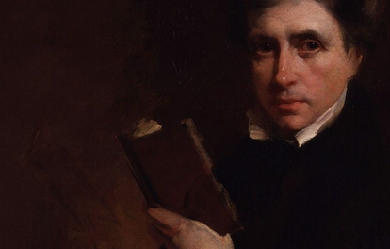
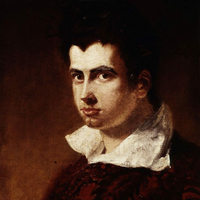
James Henry Leigh Hunt (19 October 1784– 28 August 1859), best known as Leigh Hunt, was an English critic, essayist, poet, and writer. Biography Early life James Henry Leigh Hunt was born at Southgate, London, where his parents had settled after leaving the United States. His father Isaac, a lawyer from Philadelphia, and his mother, Mary Shewell, a merchant’s daughter and a devout Quaker, had been forced to come to Britain because of their loyalist sympathies during the American War of Independence. Hunt’s father took holy orders and became a popular preacher, but he was unsuccessful in obtaining a permanent living. Hunt’s father was then employed by James Brydges, 3rd Duke of Chandos, as tutor to his nephew, James Henry Leigh (father of Chandos Leigh), after whom the boy was named. Education Leigh Hunt was educated at Christ’s Hospital from 1791 to 1799, a period which is detailed in his autobiography. He entered the school shortly after Samuel Taylor Coleridge and Charles Lamb had both left; Thomas Barnes, however, was a school friend of his. One of the current boarding houses at Christ’s Hospital is named after him. As a boy, he was an ardent admirer of Thomas Gray and William Collins, writing many verses in imitation of them. A speech impediment, later cured, prevented his going to university. “For some time after I left school,” he says, “I did nothing but visit my school-fellows, haunt the book-stalls and write verses.” His poems were published in 1801 under the title of Juvenilia, and introduced him into literary and theatrical society. He began to write for the newspapers, and published in 1807 a volume of theatre criticism, and a series of Classic Tales with critical essays on the authors. Hunt’s early essays were published by Edward Quin, editor and owner of The Traveller. Family In 1809, Leigh Hunt married Marianne Kent (whose parents were Thomas and Ann). Over the next 20 years they had ten children: Thornton Leigh (1810–73), John Horatio Leigh (1812–46), Mary Florimel Leigh (1813–49), Swinburne Percy Leigh (1816–27), Percy Bysshe Shelley Leigh (1817–99), Henry Sylvan Leigh (1819–76), Vincent Leigh (1823–52), Julia Trelawney Leigh (1826–72), Jacyntha Leigh (1828–1914), and Arabella Leigh (1829–30). Marianne, who had been in ill health for most of her life, died 26 January 1857, aged sixty-nine. Leigh Hunt made little mention of his family in his autobiography. Marianne’s sister, Elizabeth Kent (Hunt’s sister-in-law), became his amanuensis. Newspapers The Examiner In 1808 he left the War Office, where he had been working as a clerk, to become editor of the Examiner, a newspaper founded by his brother, John. His brother Robert Hunt, among others, also contributed to its columns; his criticism earned the enmity of William Blake, who described the journal’s office at Beaufort Buildings, Strand, London, as containing a “nest of villains”. Blake’s response included Leigh Hunt, who aside from publishing the vitriolic reviews of 1808 and 1809 had added Blake’s name on a list of “quacks”. This journal soon acquired a reputation for unusual political independence; it would attack any worthy target, “from a principle of taste,” as John Keats expressed it. In 1813, an attack on the Prince Regent, based on substantial truth, resulted in prosecution and a sentence of two years’ imprisonment for each of the brothers—Leigh Hunt served his term at the Surrey County Gaol. Leigh Hunt’s visitors in prison included Lord Byron, Thomas Moore, Lord Brougham, Charles Lamb and others, whose acquaintance influenced his later career. The stoicism with which Leigh Hunt bore his imprisonment attracted general attention and sympathy. His imprisonment allowed him many luxuries and access to friends and family, and Lamb described his decorations of the cell as something not found outside a fairy tale. When Jeremy Bentham called on him, he was found playing battledore. A number of essays in The Examiner that were written by Hunt and William Hazlitt between 1814 and 1817 under the series title “The Round Table” were collected in book form in The Round Table, published in two volumes in 1817. Twelve of the fifty-two essays were by Hunt, the rest by Hazlitt. The Reflector In 1810–1811 he edited a quarterly magazine, the Reflector, for his brother John. He wrote “The Feast of the Poets” for this, a satire, which offended many contemporary poets, particularly William Gifford of the Quarterly. The Indicator In 1819–1821, Hunt edited The Indicator, a weekly literary periodical published by Joseph Appleyard. Hunt probably wrote much of the content as well, which included reviews, essays, stories, and poems. Poetry In 1816 he made a mark in English literature with the publication of Story of Rimini, based on the tragic episode of Francesca da Rimini told in Dante’s Inferno. Hunt’s preference was decidedly for Chaucer’s verse style, as adapted to modern English by John Dryden, in opposition to the epigrammatic couplet of Alexander Pope which had superseded it. The poem is an optimistic narrative which runs contrary to the tragic nature of its subject. Hunt’s flippancy and familiarity, often degenerating into the ludicrous, subsequently made him a target for ridicule and parody. In 1818 appeared a collection of poems entitled Foliage, followed in 1819 by Hero and Leander, and Bacchus and Ariadne. In the same year he reprinted these two works with The Story of Rimini and The Descent of Liberty with the title of Poetical Works, and started the Indicator, in which some of his best work appeared. Both Keats and Shelley belonged to the circle gathered around him at Hampstead, which also included William Hazlitt, Charles Lamb, Bryan Procter, Benjamin Haydon, Charles Cowden Clarke, C.W. Dilke, Walter Coulson and John Hamilton Reynolds. This group was known as the Hunt Circle, or, pejoratively, as the Cockney School. Some of Hunt’s most popular poems are “Jenny kiss’d Me”, “Abou Ben Adhem” and “A Night-Rain in Summer”. Friendship with Keats and Shelley He had for some years been married to Marianne Kent. His own affairs were in confusion, and only Percy Bysshe Shelley’s generosity saved him from ruin. In return he showed sympathy to Shelley during the latter’s domestic distresses, and defended him in the Examiner. He introduced Keats to Shelley and wrote a very generous appreciation of him in the Indicator. Keats seems, however, to have subsequently felt that Hunt’s example as a poet had been in some respects detrimental to him. After Shelley’s departure for Italy in 1818, Leigh Hunt became even poorer, and the prospects of political reform less satisfactory. Both his health and that of his wife failed, and he was obliged to discontinue the Indicator (1819–1821), having, he says, “almost died over the last numbers.” Shelley suggested that Hunt go to Italy with him and Byron to establish a quarterly magazine in which Liberal opinions could be advocated with more freedom than was possible at home. An injudicious suggestion, it would have done little for Hunt or the Liberal cause at the best, and depended entirely upon the co-operation of the capricious, parsimonious Byron. Byron’s principal motive for agreeing appears to have been the expectation of acquiring influence over the Examiner, and he was mortified to discover that Hunt was no longer interested in the Examiner. Leigh Hunt left England for Italy in November 1821, but storm, sickness and misadventure retarded his arrival until 1 July 1822, a rate of progress which Thomas Love Peacock appropriately compares to the navigation of Ulysses. The death of Shelley, a few weeks later, destroyed every prospect of success for the Liberal. Hunt was now virtually dependent upon Byron, who did not relish the idea of being patron to Hunt’s large and troublesome family. Byron’s friends also scorned Hunt. The Liberal lived through four quarterly numbers, containing contributions no less memorable than Byron’s “Vision of Judgment” and Shelley’s translations from Faust; but in 1823 Byron sailed for Greece, leaving Hunt at Genoa to shift for himself. The Italian climate and manners, however, were entirely to Hunt’s taste, and he protracted his residence until 1825, producing in the interim Ultra-Crepidarius: a Satire on William Gifford (1823), and his translation (1825) of Francesco Redi’s Bacco in Toscana. In 1825 a litigation with his brother brought him back to England, and in 1828 he published Lord Byron and some of his Contemporaries, a corrective to idealized portraits of Byron. The public was shocked that Hunt, who had been obliged to Byron for so much, would “bite the hand that fed him” in this way. Hunt especially writhed under the withering satire of Moore. For many years afterwards, the history of Hunt’s life is a painful struggle with poverty and sickness. He worked unremittingly, but one effort failed after another. Two journalistic ventures, the Tatler (1830–1832), a daily devoted to literary and dramatic criticism, and Leigh Hunt’s London Journal (1834–1835), were discontinued for want of subscribers, although the latter contained some of his best writing. His editorship (1837–1838) of the Monthly Repository, in which he succeeded William Johnson Fox, was also unsuccessful. The adventitious circumstances which allowed the Examiner to succeed no longer existed, and Hunt’s personality was unsuited to the general body of readers. In 1832 a collected edition of his poems was published by subscription, the list of subscribers including many of his opponents. In the same year was printed for private circulation Christianism, the work afterwards published (1853) as The Religion of the Heart. A copy sent to Thomas Carlyle secured his friendship, and Hunt went to live next door to him in Cheyne Row in 1833. Sir Ralph Esher, a romance of Charles II’s period, had a success, and Captain Sword and Captain Pen (1835), a spirited contrast between the victories of peace and the victories of war, deserves to be ranked among his best poems. In 1840 his circumstances were improved by the successful representation at Covent Garden of his play Legend of Florence. Lover’s Amazements, a comedy, was acted several years afterwards, and was printed in Leigh Hunt’s Journal (1850–1851); other plays remained in manuscript. In 1840 he wrote introductory notices to the work of Sheridan and to Edward Moxon’s edition of the works of William Wycherley, William Congreve, John Vanbrugh and George Farquhar, a work which furnished the occasion of Macaulay’s essay on the Dramatists of the Restoration. The narrative poem The Palfrey was published in 1842. More financial difficulties The time of Hunt’s greatest difficulties was between 1834 and 1840. He was at times in absolute poverty, and his distress was aggravated by domestic complications. By Macaulay’s recommendation he began to write for the Edinburgh Review. In 1844 Mary Shelley and her son, on succeeding to the family estates, settled an annuity of £120 upon Hunt (Rossetti 1890); and in 1847 Lord John Russell procured him a pension of £200. Now living in improved comfort, Hunt published the companion books, Imagination and Fancy (1844), and Wit and Humour (1846), two volumes of selections from the English poets, which displayed his refined, discriminating critical tastes. His book on the pastoral poetry of Sicily, A Jar of Honey from Mount Hybla (1848), is also delightful. The Town (2 vols., 1848) and Men, Women and Books (2 vols., 1847) are partly made up from former material. The Old Court Suburb (2 vols., 1855; ed. A Dobson, 2002) is a sketch of Kensington, where he long resided. In 1850 he published his Autobiography (3 vols.), a naive and affected, but accurate, piece of self-portraiture. A Book for a Corner (2 vols.) was published in 1849, and his Table Talk appeared in 1851. In 1855 his narrative poems, original and translated, were collected under the title Stories in Verse. He died in Putney on 28 August 1859, and is buried at Kensal Green Cemetery. In September 1966 Christ’s Hospital named one of its Houses in memory of him. Leigh Hunt was the original of Harold Skimpole in Bleak House. "Dickens wrote in a letter of 25 September 1853, 'I suppose he is the most exact portrait that was ever painted in words!... It is an absolute reproduction of a real man’; and a contemporary critic commented, 'I recognized Skimpole instantaneously;... and so did every person whom I talked with about it who had ever had Leigh Hunt’s acquaintance.'" G. K. Chesterton suggested that Dickens “may never once have had the unfriendly thought, ‘Suppose Hunt behaved like a rascal!’; he may have only had the fanciful thought, ‘Suppose a rascal behaved like Hunt!’” (Chesterton 1906). Other works Amyntas, A Tale of the Woods (1820), a translation of Tasso’s Aminta Flora Domestica, Or, The Portable Flower-garden: with Directions for the Treatment of Plants in Pots and Illustrations From the Works of the Poets. London: Taylor and Hessey. 1823., with Elizabeth Kent, published anonymously The Seer, or Common-Places refreshed (2 pts., 1840–1841) three of the Canterbury Tales in The Poems of Geoffrey Chaucer modernized (1841) Stories from the Italian Poets (1846) compilations such as One Hundred Romances of Real Life (1843) selections from Beaumont and Fletcher (1855) with S Adams Lee, The Book of the Sonnet (Boston, 1867). His Poetical Works (2 vols.), revised by himself and edited by Lee, were printed at Boston in 1857, and an edition (London and New York) by his son, Thornton Hunt, appeared in 1860. Among volumes of selections are Essays (1887), ed. A Symons; Leigh Hunt as Poet and Essayist (1889), ed. C Kent; Essays and Poems (1891), ed. RB Johnson for the “Temple Library.” His Autobiography was revised shortly before his death, and edited (1859) by his son Thornton Hunt, who also arranged his Correspondence (2 vols., 1862). Additional letters were printed by the Cowden Clarkes in their Recollections of Writers (1878). The Autobiography was edited (2 vols., 1903) with full bibliographical note by Roger Ingpen. A bibliography of his works was compiled by Alexander Ireland (List of the Writings of William Hazlitt and Leigh Hunt, 1868). There are short lives of Hunt by Cosmo Monkhouse ("Great Writers," 1893) and by RB Johnson (1896). Oxford Dictionary of National Biography Volume 28 (2004). References Wikipedia—https://en.wikipedia.org/wiki/Leigh_Hunt
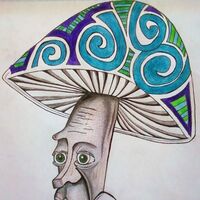
I have a desire. A desire to fix my life while at the same time fixing others. I'm a wanna-be poet from Kansas City, and I'm still very young. I want to continue to stretch my mind and continue to gain skills at writing. My poetry is mainly about my life and how I cope through, in hopes that I'll help someone else. I prefer deep emotional poetry, such as Edgar Allen Poe, or the best of Shakespeare, I also love Donte. Poetry is an amazing art, and I will always try to be better.
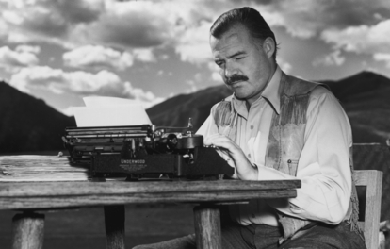

Ernest Hemingway (1899-1961) was one of the most significant American authors of the Twentieth century . His novels and short fictions have left an indelible mark on the literary production of the United States and the world. Although most often remembered for his economical and understated fiction, he was also a noted journalist. In 1954, Ernest Hemingway was awarded the Novel Prize in Literature. Hemingway is also known for his heroic, adventurous and often stereotypically “manly” public persona. The myth he cultivated of himself as a man of action aided the important Modernist reading of many of his works.


Just a young African American male trying find my way in this cruel world RJ is the name Writing is something I do Basketball is just a game I love to play hopefully I make it big one day Spreading my testimony so listen to what i have to say Motivating people day bye day to stay on the right path and just say No to these Ignorant Games people try to play Knowledge I learned comes from my Mistakes so If you would just Here me out that would be great Motivating people is the key for me so let's See how this goes
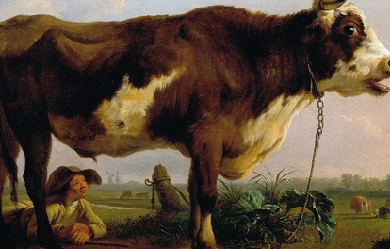
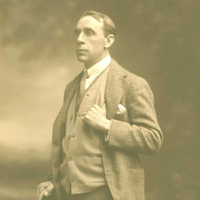
Ralph Hodgson (9 September 1871– 3 November 1962), was an English poet, very popular in his lifetime on the strength of a small number of anthology pieces, such as The Bull. He was one of the more ‘pastoral’ of the Georgian poets. In 1954, he was awarded the Queen’s Gold Medal for Poetry. He seems to have covered his tracks in relation to much of his life; he was averse to publicity. This has led to claims that he was reticent. Far from that being the case, his friend Walter De La Mare found him an almost exhausting talker; but he made a point of personal privacy. He kept up a copious correspondence with other poets and literary figures, including those he met in his time in Japan such as Takeshi Saito. His poem The Bells of Heaven was ranked 85th in the list of Classic FM’s One Hundred Favourite Poems. Quoting from the biography which accompanied the poem: “He was one of the earliest writers to be concerned with ecology, speaking out against the fur trade and man’s destruction of the natural world.” Early life He was born in Darlington in County Durham to a coal mining father. In his youth he was a champion boxer and billiards player and worked in the theatre in New York before returning to England. From about 1890 he worked for a number of London publications. He was a comic artist, signing himself 'Yorick’, and became art editor on C. B. Fry’s Weekly Magazine of Sports and Out-of-Door Life. His first poetry collection, The Last Blackbird and Other Lines, appeared in 1907. It is said that his father was a coal merchant, and that he ran away from home while at school. Poet and publisher In 1912 he founded a small press, At the Sign of the Flying Fame, with the illustrator Claud Lovat Fraser (1890–1921) and the writer and journalist Holbrook Jackson (1874–1948). It published his collection The Mystery (1913). Hodgson received the Edmond de Polignac Prize in 1914, for a musical setting of The Song of Honour, and was included in the Georgian Poetry anthologies. The press became inactive in 1914 as World War I broke out and he and Lovat joined the armed forces (it did continue until 1923). Hodgson was in the Royal Navy and then the British Army. His reputation was established by Poems (1917). In Japan His first wife Janet (née Chatteris) died in 1920. He then married Muriel Fraser (divorced 1932). Shortly after that he accepted an invitation to teach English at Tohoku University in Sendai, Japan. In 1933 he married Lydia Aurelia Bolliger, an American missionary and teacher there. While in Japan, Hodgson worked, almost anonymously, as part of the committee that translated the great collection of Japanese classical poetry, the Man’yōshū, into English. The high quality of the published translations is almost certainly the result of his “final revision” of the texts. This was an undertaking worthy of Arthur Waley and could arguably be considered Hodgson’s major accomplishment as a poet. Retirement in the USA In 1938 Hodgson left Japan, visited friends in the UK including Siegfried Sassoon (they had met 1919) and then settled permanently with Aurelia in Minerva, Ohio. He was involved there in publishing, under the Flying Scroll imprint, and some academic contacts. He died in Minerva. Later work Arthur Bliss set some of his poems to music. His Collected Poems appeared in 1961, The Skylark (1959) having been his only new book (other than the collaborative work in the Man’yōshū,) in many decades. Quotes “Some things have to be believed to be seen.” “The handwriting on the wall may be a forgery.” “Time, you old gypsy man, will you not stay, put up your caravan just for one day?” “Did anyone ever have a boring dream?” References Wikipedia—https://en.wikipedia.org/wiki/Ralph_Hodgson

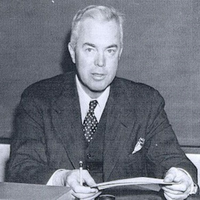
Robert Silliman Hillyer (June 3, 1895– December 24, 1961) was an American poet. Life Hillyer was born in East Orange, New Jersey. He attended Kent School in Kent, Connecticut, and graduated from Harvard in 1917, after which he went to France and volunteered with the S.S.U. 60 of the Norton-Harjes Ambulance Corps serving the Allied Forces in World War I. He had long links to Harvard University, including holding a position as a Professor of English. From 1948 to 1951 Hillyer was a visiting professor at Kenyon College and from there went to serve on the faculty at the University of Delaware. While teaching at Trinity College in Hartford, Connecticut in the late 1920s, Hillyer was made a member of the Epsilon chapter of the prestigious St. Anthony Hall Delta Psi literary fraternity in 1927. His work is in meter and often rhyme. He is known for his sonnets and for such poems as “Theme and Variations” (on his war experiences) and the light “Letter to Robert Frost”. American composer Ned Rorem’s most famous art song is a setting of Hillyer’s “Early in the Morning”. Hillyer is remembered as a kind of villain by Ezra Pound scholars, who associate him with his 1949 attacks on The Pisan Cantos in the Saturday Review of Literature which sparked the Bollingen Controversy. Hillyer was identified with the Harvard Aesthetes grouping. He was 66 when he died in Wilmington, Delaware. Awards * Pulitzer Prize for Poetry for “Collected Verse” in 1934. Works Poetry * The Collected Poems. Knopf. 1961. * The relic & other poems. Knopf. 1957. * The suburb by the sea: new poems. Knopf. 1952. * The death of Captain Nemo: a narrative poem. A.A. Knopf. 1949. * Poems for music, 1917–1947. A. A. Knopf. 1947. * The Collected Verse of Robert Hillyer. A.A. Knopf. 1933. * The Coming Forth by Day: An Anthology of Poems from the Egyptian Book of the Dead. B.J. Brimmer Company. 1923. * Hillyer, Robert (1920). Alchemy: A Symphonic Poem. Illustrator Beatrice Stevens. Kessinger Publishing, LLC. * Hillyer, Robert (1920). The Five Books of Youth. Brentano’s. * Hillyer, Robert (1917). Sonnets and Other Lyrics. Harvard University Press. * Hillyer, Robert (1917). The Wise Old Apple Tree in the Spring. Harvard University Press. Novels * Riverhead (1932) Criticism * In Pursuit of Poetry. McGraw-Hill. 1960. * First Principles of Verse. The Writer. 1950. Translations * Oluf Friis (1922). A Book of Danish Verse: Translated in the Original Meters. Translators Samuel Foster Damon, Robert Hillyer. The American-Scandinavian Foundation. Editors * Kahlil Gibran (1959). Hayim Musa Nahmad, Robert Hillyer, ed. A Tear and a Smile. A. A. Knopf. * Samuel Foster Damon, Robert Hillyer, ed. (1923). Eight More Harvard Poets. Brentano’s. References Wikipedia—https://en.wikipedia.org/wiki/Robert_Hillyer

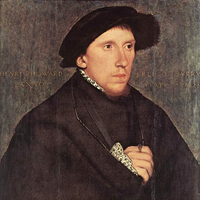
Henry Howard, Earl of Surrey, KG (1516/1517– 19 January 1547), was an English aristocrat, and one of the founders of English Renaissance poetry. He was a first cousin of both Anne Boleyn and Catherine Howard, the second and fifth wives of King Henry VIII. Life He was the eldest son of Thomas Howard, 3rd Duke of Norfolk, and his second wife, the former Lady Elizabeth Stafford (daughter of Edward Stafford, 3rd Duke of Buckingham), so he was descended from kings on both sides of his family tree: King Edward I on his father’s side and King Edward III on his mother’s side. He was reared at Windsor with Henry VIII’s illegitimate son Henry FitzRoy, 1st Duke of Richmond and Somerset, and they became close friends and, later, brothers-in-law upon the marriage of Surrey’s sister to Fitzroy. Like his father and grandfather, he was a brave and able soldier, serving in Henry VIII’s French wars as “Lieutenant General of the King on Sea and Land.” He was repeatedly imprisoned for rash behaviour, on one occasion for striking a courtier, on another for wandering through the streets of London breaking the windows of sleeping people. He became Earl of Surrey in 1524 when his grandfather died and his father became Duke of Norfolk. In 1532 he accompanied his first cousin Anne Boleyn, the King, and the Duke of Richmond to France, staying there for more than a year as a member of the entourage of Francis I of France. In 1536 his first son, Thomas (later 4th Duke of Norfolk), was born, Anne Boleyn was executed on charges of adultery and treason, and the Duke of Richmond died at the age of 17 and was buried at one of the Howard homes, Thetford Abbey. In 1536 Surrey also served with his father against the Pilgrimage of Grace rebellion protesting against the Dissolution of the Monasteries. Literary activity and legacy He and his friend Sir Thomas Wyatt were the first English poets to write in the sonnet form that Shakespeare later used, and Surrey was the first English poet to publish blank verse (unrhymed iambic pentameter) in his translation of the second and fourth books of Virgil’s Aeneid. Together, Wyatt and Surrey, due to their excellent translations of Petrarch’s sonnets, are known as “Fathers of the English Sonnet”. While Wyatt introduced the sonnet into English, it was Surrey who gave them the rhyming meter and the division into quatrains that now characterizes the sonnets variously named English, Elizabethan or Shakespearean sonnets. Death and burial Henry VIII, consumed by paranoia and increasing illness, became convinced that Surrey had planned to usurp the crown from his son Edward. The King had Surrey imprisoned—with his father—sentenced to death on 13 January 1547, and beheaded for treason on 19 January 1547 (his father survived impending execution only by it being set for the day after the king happened to die, though he remained imprisoned). Surrey’s son Thomas became heir to the dukedom of Norfolk instead, inheriting it on the 3rd duke’s death in 1554. He is buried in a spectacular painted alabaster tomb in the church of St Michael the Archangel, Framlingham. Marriage and issue He married Frances de Vere, the daughter of John de Vere, 15th Earl of Oxford, and Elizabeth Trussell. They had two sons and three daughters: Thomas Howard, 4th Duke of Norfolk (10 March 1536– 2 June 1572), married (1) Mary FitzAlan (2) Margaret Audley (3) Elizabeth Leyburne. Henry Howard, 1st Earl of Northampton, who died unmarried. Jane Howard, who married Charles Neville, 6th Earl of Westmorland. Margaret Howard, who married Henry Scrope, 9th Baron Scrope of Bolton. Katherine Howard, who married Henry Berkeley, 7th Baron Berkeley. In popular culture Henry Howard, Earl of Surrey was portrayed by actor David O’Hara in The Tudors, a television series which ran from 2007 to 2010. Ancestry References Wikipedia—https://en.wikipedia.org/wiki/Henry_Howard,_Earl_of_Surrey
.jpg)
That is what this is all about, nothing more, nothing less. My intention and desire is for anyone who has a desire and intention to look beyond this physical world we live in and truly question what is real and what is not. Be it of a spiritual matter or metaphysical science is up to you. As I travel through this journey called life I’m left with one conclusion that I try to hold true to. Love, or as difficult as it may sound, unconditional love. What comes next is truth or better put, absolute truth. Why do I list these two at the top? I humbly believe wholeheartedly that this is the essence of God and hopefully one day the essence of ourselves. Unconditional love & absolute truth. The mind and heart of God as I see it. What a world it would be if only unconditional love could rule this world. Truth, it can be argued over, till time comes to an end. Unconditional love is a very difficult thing to practice, but what a goal to achieve. Maybe in the end, come Judgment Day, love is all the truth that really matters. Believe in what you will, but know this to be true. After all is said & done, what really matters? Material possessions, money, power or even simple self-esteem will all pass away to insignificance. Love lasts forever. Love forgives. Love is our true connection to life & God itself. I’ve heard about all the latest philosophies and religions. If it’s not based in love, unconditional love, it will not last. This is my autobiography put before you. I’ve written it in truth & love. I hope this touches your heart, makes you think deep and causes you to question all that society has put upon you to believe. Then reach your own conclusions. God Bless & Keep you in His love.

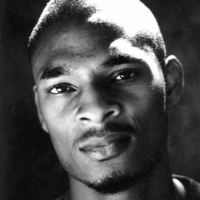
Terrance Hayes (born November 18, 1971) is an American poet and educator who has published five poetry collections. His 2010 collection, Lighthead, won the National Book Award for Poetry in 2010. In September 2014, he was one of 21 recipients of the prestigious MacArthur fellowships awarded to individuals who show outstanding creativity in their work. Life and education Hayes was born in Columbia, South Carolina. He received a B.A. from Coker College and an M.F.A. from the University of Pittsburgh writing program. He was a Professor of Creative Writing at Carnegie Mellon University until 2013, at which time he joined the faculty at the English Department at the University of Pittsburgh. He lives in Pittsburgh with his wife, the poet Yona Harvey, who also serves as a professor at the University of Pittsburgh, and their children. Works * Hayes first book of poetry, Muscular Music (1999), won both a Whiting Award and the Kate Tufts Discovery Award. His second collection, Hip Logic (2002), won the National Poetry Series, was a finalist for the Los Angeles Times Book Award, and runner-up for the James Laughlin Award from the Academy of American Poets. He won the National Book Award for Lighthead. * Hayes poems have appeared in literary journals and magazines including The New Yorker, The American Poetry Review, Ploughshares, Fence, The Kenyon Review, Jubilat Harvard Review, West Branch, Poetry, and The Adroit Journal’. * In praising Hayes’s work, Cornelius Eady has said: “First you’ll marvel at his skill, his near-perfect pitch, his disarming humor, his brilliant turns of phrase. Then you’ll notice the grace, the tenderness, the unblinking truth-telling just beneath his lines, the open and generous way he takes in our world.” * In September 2014, he was honored as one of the 21 2014 fellows of the John D. and Catherine T. MacArthur Foundation. The fellowship comes with a $625,000 stipend over five years and is one of the most prestigious prizes that is awarded for artists, scholars and professionals. * In January 2017, Hayes was elected a Chancellor of the Academy of American Poets. Awards * * 2014 MacArthur Foundation Fellow * 2011 United States Artists Zell Fellow for Literature * 2010 National Book Award for Poetry, for Lighthead * Pushcart Prize, a Best American Poetry 2005 selection * National Endowment for the Arts Fellowship * 2009 Guggenheim Fellowship * James Laughlin Award runner-up, from the Academy of American Poets * Kate Tufts Discovery Award for Muscular Music (1999) * 2001 National Poetry Series, for Hip Logic * 1999 Whiting Award Poetry collections * * How to Be Drawn (Penguin Books, 2015) * Lighthead (Penguin Books, 2010)—winner of the National Book Award * Wind in a Box. Penguin Books. 2006. ISBN 9781440626982. * Hip Logic. Penguin Books. 2002. ISBN 978-0-14-200139-4. * Muscular Music (Tia Chucha Press, 1999; reissued by Carnegie Mellon University Press, 2006) References Wikipedia—https://en.wikipedia.org/wiki/Terrance_Hayes


i spent my early life in St Louis but learned about life in Califoria during the 70's. although i have grown up and joined the real world, my poetry reflects that girl in Venice when life held so much promise and magic....and i still believed the in the hopes of the 60s, mixed with the cynicism that came when the age turned wrong...



